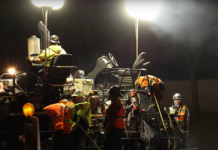The Idaho National Laboratory is primarily a research facility in Idaho Falls, which is owned by the United States Department of Energy and managed by Battelle Energy Alliance.
Historically, most research done at INL has concerned how nuclear reactors behave.
More than 50 reactors have been built at the site, including the world’s first nuclear submarine. While most have been decommissioned, INL has the largest concentration of reactors in the world.
INL employs about 4,000 people and sits on an 890-square-mile complex in the high desert of eastern Idaho.
INL began its life as a U.S. government artillery test range in the 1940s after the Japanese attacked Pearl Harbor. In 1949, the federal research facility was established as the National Reactor Testing Station.
During its lifetime, INL has been involved in three accidents that made national headlines:
In 1961, the only fatal nuclear-reactor incident to occur in the United States happened when a control rod was pulled too far out of a reactor, effectively destroying it and leading to a power excursion and steam explosion. The blast killed three men working on the reactor. Due to the excessive contamination, all three were buried in lead-lined coffins.
On Nov. 8, 2011, Brian Simmons and Ralph Stanton were exposed to Plutonium-239. Both sued BEA in the coming years and both settled out of court. Terms of the settlements were not disclosed.
In April 2018, four canisters of depleted uranium sludge exploded, ejecting their lids at INL. The waste originated from the decommissioned Rocky Flats weapons plutonium-production plant.
Vincent Ialenti researched the drum breaches and attributed them to “systemic incentives to speed up waste cleanup projects beyond their organizational capacity, without commensurately expanding their safety or oversight mechanisms.”




![Shred-A-Thon to take place tomorrow An image of shredded paper. [Pixabay]](https://www.inmaricopa.com/wp-content/uploads/2024/03/shredded-paper-168650_1280-218x150.jpg)












![Shred-A-Thon to take place tomorrow An image of shredded paper. [Pixabay]](https://www.inmaricopa.com/wp-content/uploads/2024/03/shredded-paper-168650_1280-100x70.jpg)
